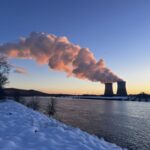The Nuclear Regulatory Commission (NRC) has dropped a study begun in 2010 to determine cancer risks in populations near U.S. nuclear power facilities.
Continuing the work was “impractical, given the significant amount of time and resources needed and the agency’s current budget constraints,” the regulatory body said.
The study that was being conducted by the National Academy of Sciences (NAS) for the NRC would have required $8 million and eight to 10 years to complete. Subsequent nationwide studies before the NRC had final cancer risk results to share with stakeholders could have prolonged the study to 2025, NAS told the NRC.
The commissioned study would have served to update findings published in the Journal of the American Medical Association in 1991. That study, more than 25 years old, is focused on cancer mortality, with limited cancer incidence in two states. It concluded there is no increased risk of death from cancer for people living in counties near nuclear plants.
However, the NRC decided in 2007 to update the report, contracting NAS in April 2010. The study was to comprise two phases: Phase 1 was to explore the feasibility of conducting an updated study by using more modern methods to perform the analysis and Phase 2 was to determine the ability to apply Phase 1 methods at seven sites recommended by the NAS committee.
Those sites were: Dresden, Ill.; Millstone, Conn.; Oyster Creek, N.J.; Haddam Neck, Conn. (decommissioned); Big Rock Point, Mich. (decommissioned); San Onofre, Calif. (closed); and Nuclear Fuel Services, Tenn. The sites were chosen because they provided a good sampling of diverse criteria.
“The NRC continues to find U.S. nuclear power plants comply with strict requirements that limit radiation releases from routine operations. The NRC and state agencies regularly analyze environmental samples from near the plants,” it said. “These analyses show the releases, when they occur, are too small to cause observable increases in cancer risk near the facilities.”
—Sonal Patel, associate editor (@POWERmagazine, @sonalcpatel)










